The Echeveria Prolifica is an attractive succulent that is true to its name. Native to hot, arid areas of Mexico, it is a highly prolific plant that self-propagates and spreads very easily. It grows very quickly and will give beautiful cover to your beds.
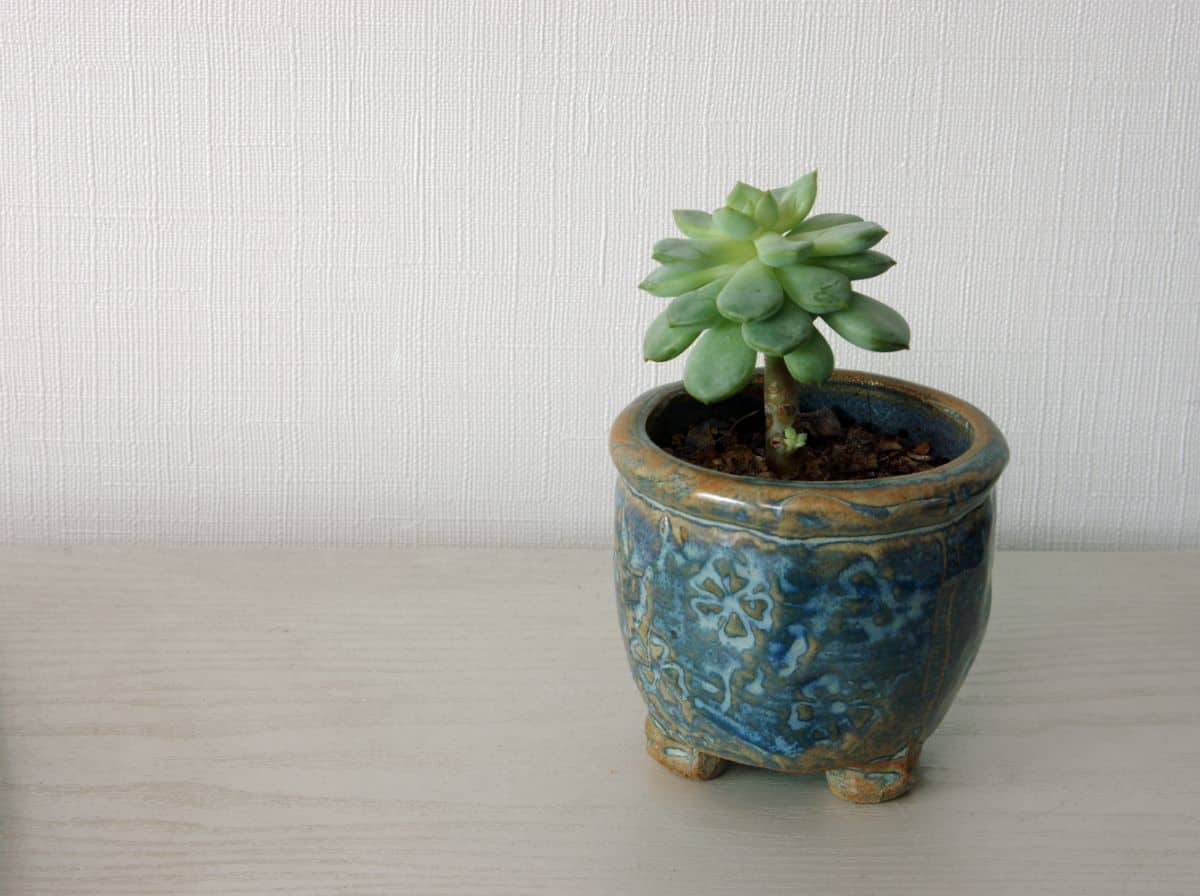
Not often found growing wildly, the Echeveria Prolifica cultivated in the United States is very possibly derived from the original plant that was brought from Mexico in 1969.
The Echeveria Prolifica is a favorite of the hummingbird, and it is visited and pollinated by these birds annually.
The Echeveria Prolifica is a perennial succulent and will live for many years, flowering year after year. If left to grow unchecked, it will spread over a very wide area. It is a highly suitable succulent for cultivating in pots, where its growth can be contained and kept in check.
Jump to:
Echeveria Prolifica Appearance
| Name: | Echeveria Prolifica |
| Soil: | Well-drained soil |
| Blooming: | Spring |
| Light: | Minimum of six hours of sunlight per day |
| Water: | When the soil is dry |
| Propagation: | Stem and leaf cuttings, offsets |
The Echeveria Prolifica is a glaucus succulent that has a pale gray to light greenish color. It is a small plant, growing in a rosette formation. The rosettes usually grow to a diameter of about 3-4 inches.
This succulent spreads by offsetting with its stolons. These horizontal stems lie on the ground and will send out offshoots that will take root in numerous positions along the length of the stolon.
These roots will eventually form new Echeveria Prolifica plants. They tend to grow in thick, dense cover along the ground. The new rosettes will clump closely together around the base of the original plant.
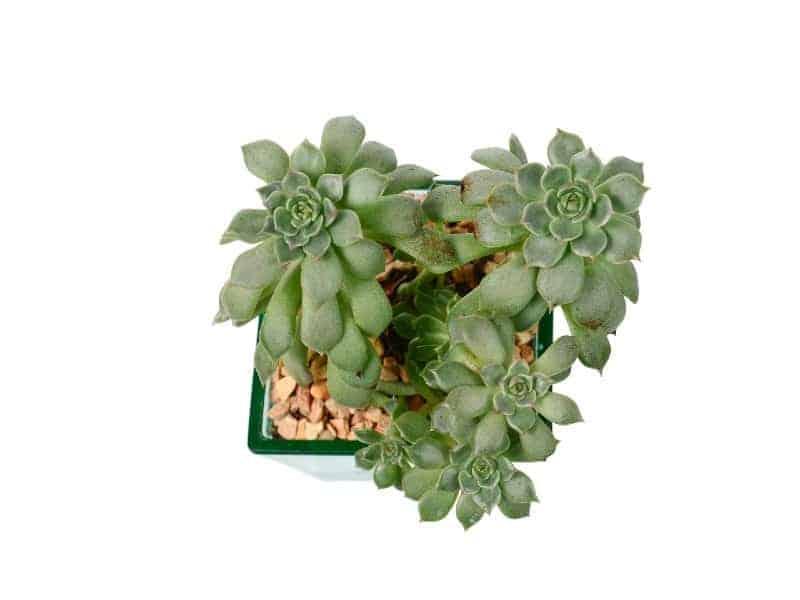
Buy it from:
For this reason, the Echeveria Prolifica is one of those succulents in the group known as Mexican hens and chicks. The new plants gather around the mother plant, in much the same way that little baby chicks gather around the mother hen.
This is not a very tall succulent. It will reach a maximum height of 6-8 inches. The leaves are usually silvery-gray to green. If they receive enough natural sunlight, they will develop a pretty blush of light pink around the tips.
The Echeveria Prolifica is an evergreen succulent. It does not shed its leaves at all and will remain attractively green throughout the year.
The leaves have a light coating of farina, a white, powdery substance that protects the leaves from intense sunlight. In the sun, it gives the leaves a silver shimmer. It provides a thin seal over the leaves, which helps to control evaporation that could cause the plant to dehydrate.
The Echeveria Prolifica will flower all the way through spring and into the beginning of summer. The flowers are quite small, and they are bell-shaped. Blooming in varying shades of yellow, they give a beautiful show, growing in clusters at the end of the long stems.
The stems are decumbent, and grow along the ground, rather than upright, although the tips usually turn upwards towards the sun. The stems can be as long as 10-12 inches each.
Many of the flowers come from the bracts, which are modified leaves that develop a flower in the axil, or the angle that lies between the leaf and the stem. These bracts can often be a lot bigger than the original flowers. They also sometimes have a brighter color than the original flowers.
The leaves of the bracts are delicate and fall off quite easily. When they land on the soil, they can take root and a new plant will usually emerge from these roots.
Caring for the Acheveria Prolifica
The Echeveria Prolifica is not difficult to cultivate and does not require much attention from you. It is easy to care for this succulent, as it can mostly be left to its own devices.
Light
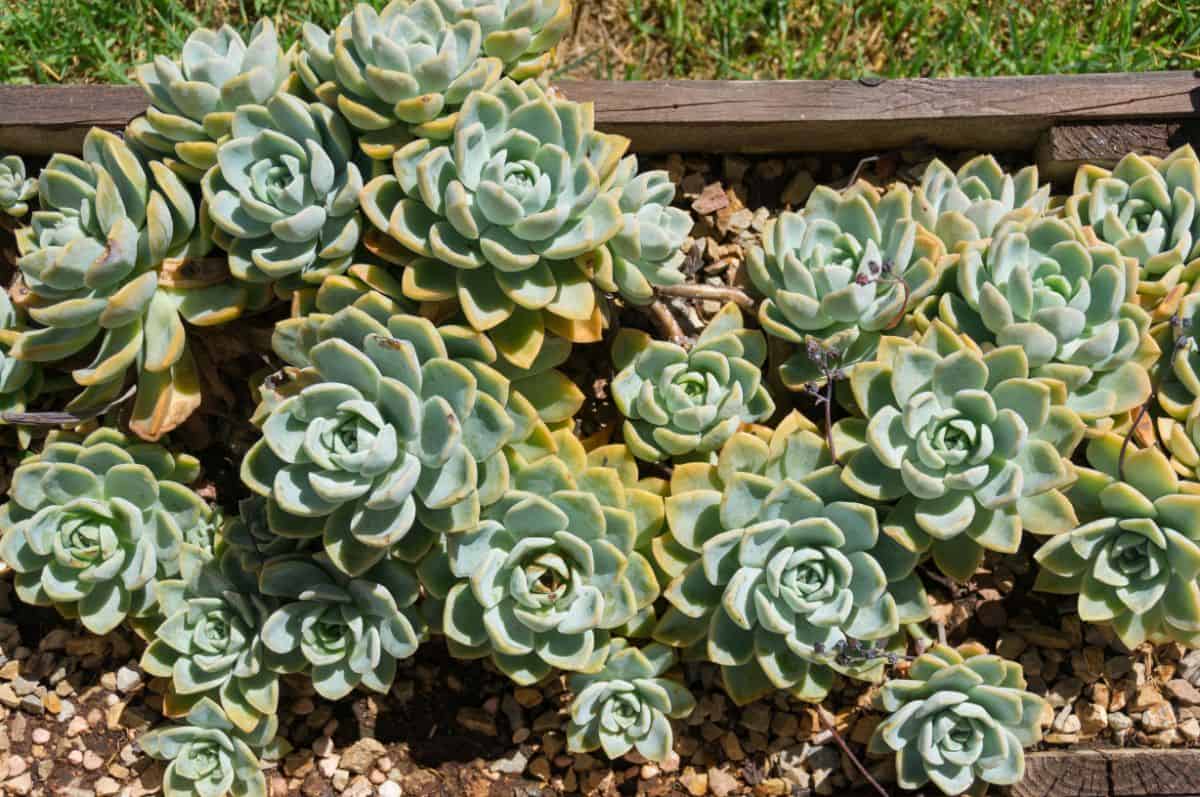
The Echeveria Prolifica, like most succulents, needs a lot of direct natural sunlight. It should be planted in an area that gets full sun to partial shade. In its native surroundings, it usually gets some protection from the sun from the shade of surrounding plants and rocks.
Even though the Echeveria Prolifica is native to a very hot, arid area, it still should not be exposed to intense, direct sunlight for the full day. The sun may be too hot, and the plant will dehydrate. It will do well in a spot that has full sun in the morning, with some dappled shade later in the day.
If you are cultivating your Echeveria Prolifica as an indoor house plant, choose a room in your house that gets a lot of bright, natural sunlight. In the northern hemisphere, this would be a south-facing room, where your succulent will thrive quite happily on a window sill.
No products found.
If you do not have a suitable room with sufficient natural light, you can give your Echeveria Prolifica a boost with the help of a grow light. This electric light produces an artificial light that is cleverly designed to mimic natural sunlight and is used in horticulture to supplement natural light for indoor plants.
Water
The Echeveria Prolifica is no different from most other succulents when it comes to its water requirements. It is used in arid, dry conditions, and is quite drought resistant.
This succulent should only be watered about once a week, to every 10 days. When watering, the plant should be watered deeply so that the roots are thoroughly soaked. It should then be allowed to dry out completely before watering again.
To test if your plant needs water, you can insert a wooden skewer or kebab stick into the soil. If it is completely dry when removed, it is time to water.
It is also helpful to do a touch test with a finger. Insert your forefinger as deeply as possible into the soil around the base of the plant. If it is dry to the touch, your succulent needs water. However, if it feels even a little damp, rather wait another day or two before checking again.
It is important that the pots or containers should have ample drainage holes at the bottom, so that excess water can run off freely. Without good drainage, the roots will not be able to dry out between waterings, and lethal root rot could set in.
Care should be taken to ensure that water is not left to sit in the folds of the leaves at the base of the rosettes. This will cause the leaves to become soft and mushy, and they may develop a fungal infection as a result. This could be very harmful to the overall health of the plant.
Temperature
Because the Echeveria Prolifica is native to the hot, dry areas of Mexico, it is used to very hot temperatures and will cope well with extremely hot weather. But it is not very cold hardy, and should not be exposed to extremely cold conditions.
If you live in a zone that has a mild to warm climate, your Echeveria Prolifica will be quite happy in your beds in the garden, where it will grow and spread prolifically, as its name suggests.
However, if you live in a part of the country with a colder climate, it is advisable to plant your Echeveria Prolifica in containers that can be taken indoors when the weather turns very cold. It will not be able to survive in temperatures lower than 25° Fahrenheit.
When kept as an indoor plant, the Echeveria Prolifica should be placed in a warm room with a reasonably constant temperature. These succulents do not like sudden changes in temperature or conditions, and will not do well if they are subject to drastic changes on a regular basis.
The Echeveria Prolifica needs to be protected against frost. Ice crystals in frost are very harmful to the leaves of succulents. They cause the individual cells in the leaves to swell, and the leaves will start to die off.
If overnight frost is expected, it is recommended that your succulents should either be moved indoors or covered with a light fabric or cloth covering.
Soil
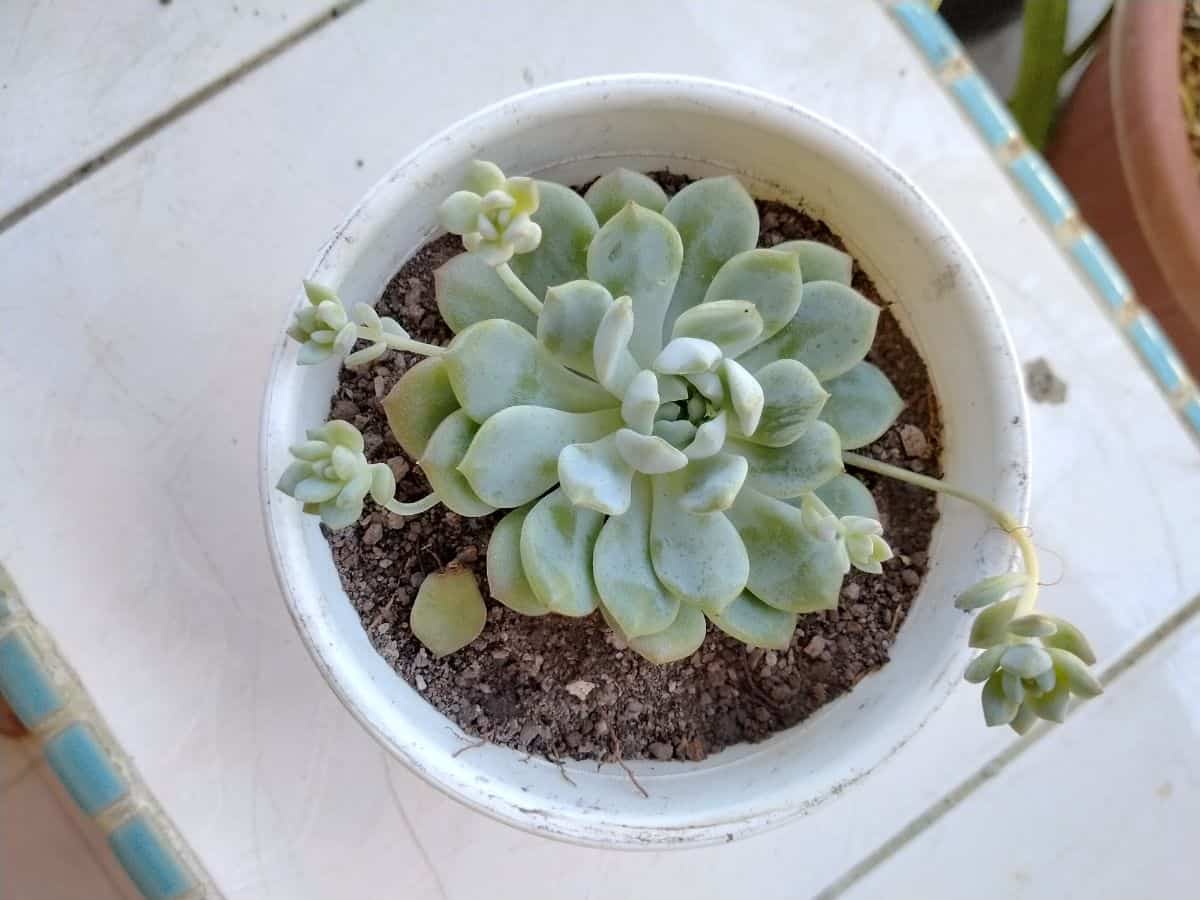
The Echeveria Prolifica is not particularly fussy about the pH level of its soil and will do well in any soil within a range of 5.6 - 7.8, which is anything from slightly acidic to moderately alkaline.
However, it is extremely important that the soil should have excellent drainage. If the soil is too thick, excess water will not be able to run off freely. The roots will then begin to rot from constant exposure to dampness.
In order to provide adequate drainage, the soil needs to be well-aerated. This can be achieved by mixing cactus potting soil with mineral grit. The mineral grit introduces larger granules and particles, allowing water to flow through the soil more easily.
There are 3 elements that can be used as mineral grit. The soil should contain 1 part cactus potting soil to 1 part mineral grit, which can be made up of any combination of the following substances.
1. Coarse sand
Coarse sand, as its name suggests, is made up of coarse granules, which aerate the soil and allow for good drainage in a far more efficient manner than fine sand.
2. Perlite
Perlite is a substance that is made up of volcanic minerals that contain a lot of natural water. This will provide your succulent with hydration while enabling good drainage.
3. Pumice
Pumice is a natural stone that can be ground into small particles and added to the soil. When cultivating succulents, it is useful for assisting with drainage, as it allows water to run freely through the soil.
Propagating the Echeveria Prolifica
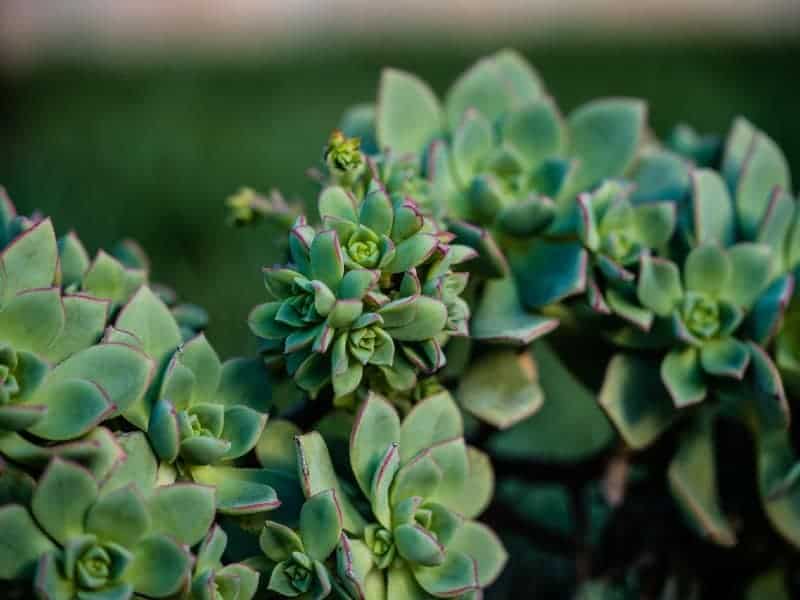
The beauty of the Echeveria Prolifica is that it can self propagate. It regularly develops new rosettes in small clusters around the mother plant. These can be separated, removed and repotted, or planted elsewhere to create a whole new plant.
This succulent can also be successfully propagated from stem cuttings or from leaves.
Propagating from stem cuttings
- Using a clean, sharp gardening scissors or knife, carefully cut a stem as close to the base of the plant as possible.
- Leave it to dry out for 3-4 days, so that a callus can form over the cut surface.
- Prepare a container with potting soil, as described above.
- Insert the callused end of the cutting into the pot, covering about half the length of the stem.
- Water lightly every 3-4 days.
- It will soon take root and start growing.
Propagating from a leaf
- Carefully twist off a healthy-looking leaf, as close to the stem as possible.
- Allow it to dry out for 1-2 days.
- Prepare a small dish with some cactus potting soil.
- Place the leaf in the dish, just below the surface of the soil.
- Sprinkle lightly with water every second or third day.
- It will soon produce little offshoots, which will develop into roots.
- Once it is growing well, it can then be repotted into a container filled with well-aerated potting soil. It should now develop into a healthy plant.
Common pests and problems with the Echeveria Prolifica
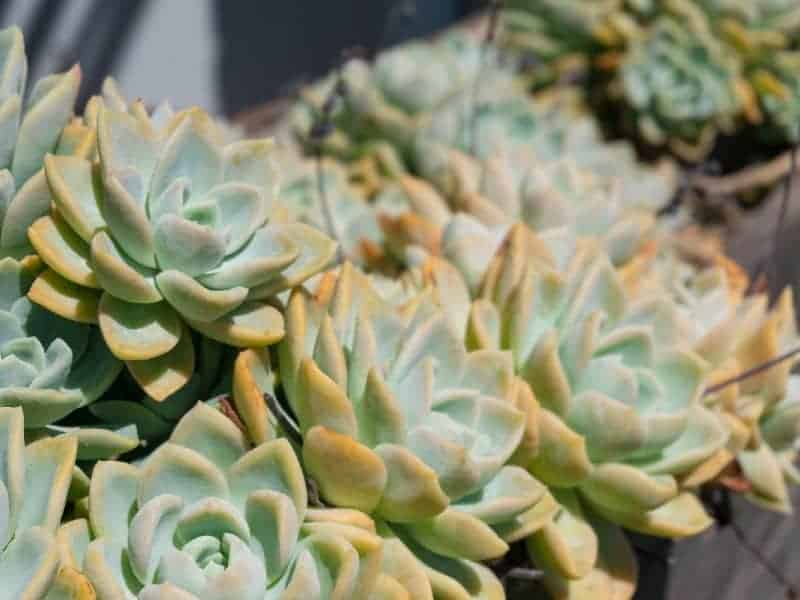
The two main problems that you may encounter with your Echeveria Prolifica are insect infestation and overwatering.
Insect infestation
The Echeveria Prolifica is prone to infestation with mealybugs and aphids. Both of these pests are highly destructive and will eat away at your plant, eventually killing it.
While it is difficult to see the actual insects themselves, their presence will be evident by the fine powdery substance left on the underside of the leaves by mealybugs, or the silvery web-like threads left by aphids.
The only way to eliminate these successfully is with a commercial pesticide, available from your local nursery.
Overwatering
Overwatering your succulents can be even more harmful than not giving enough water. When the soil is constantly wet and does not have enough time to dry fully between watering, the roots will start to develop a fungal coating from the damp.
Fungus on the roots is fatal to succulents. Over time, plants that are overwatered will eventually die as a result of root rot caused by a fungal infection.


